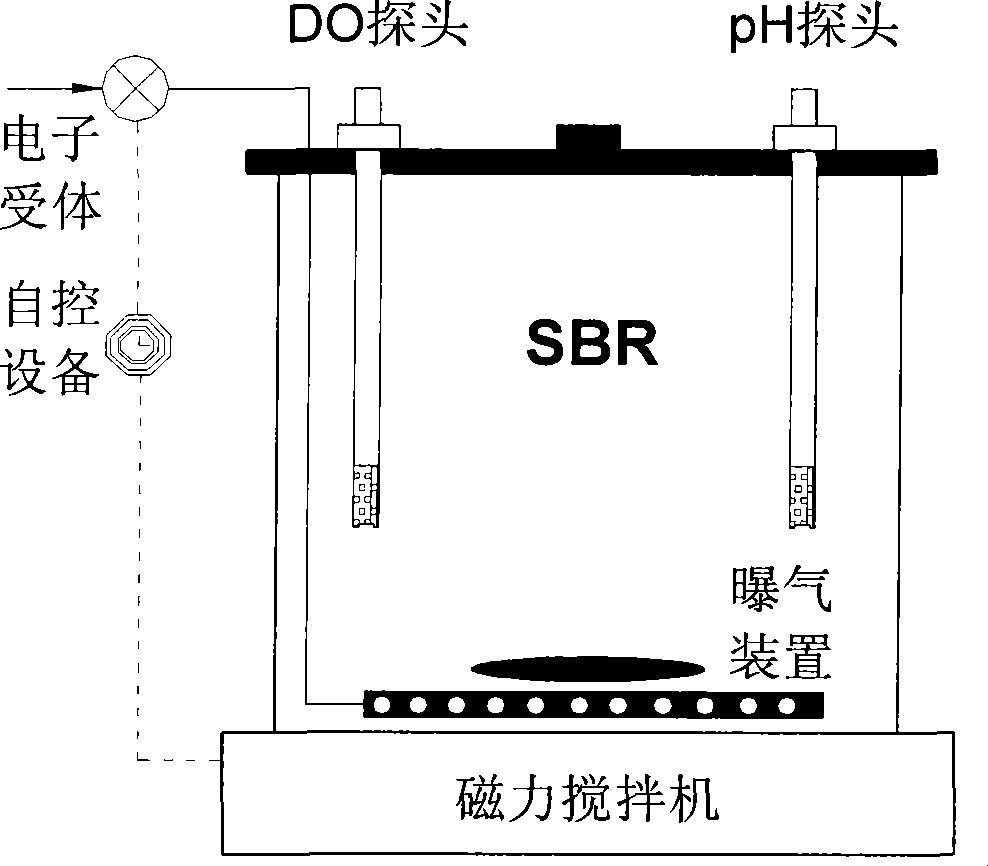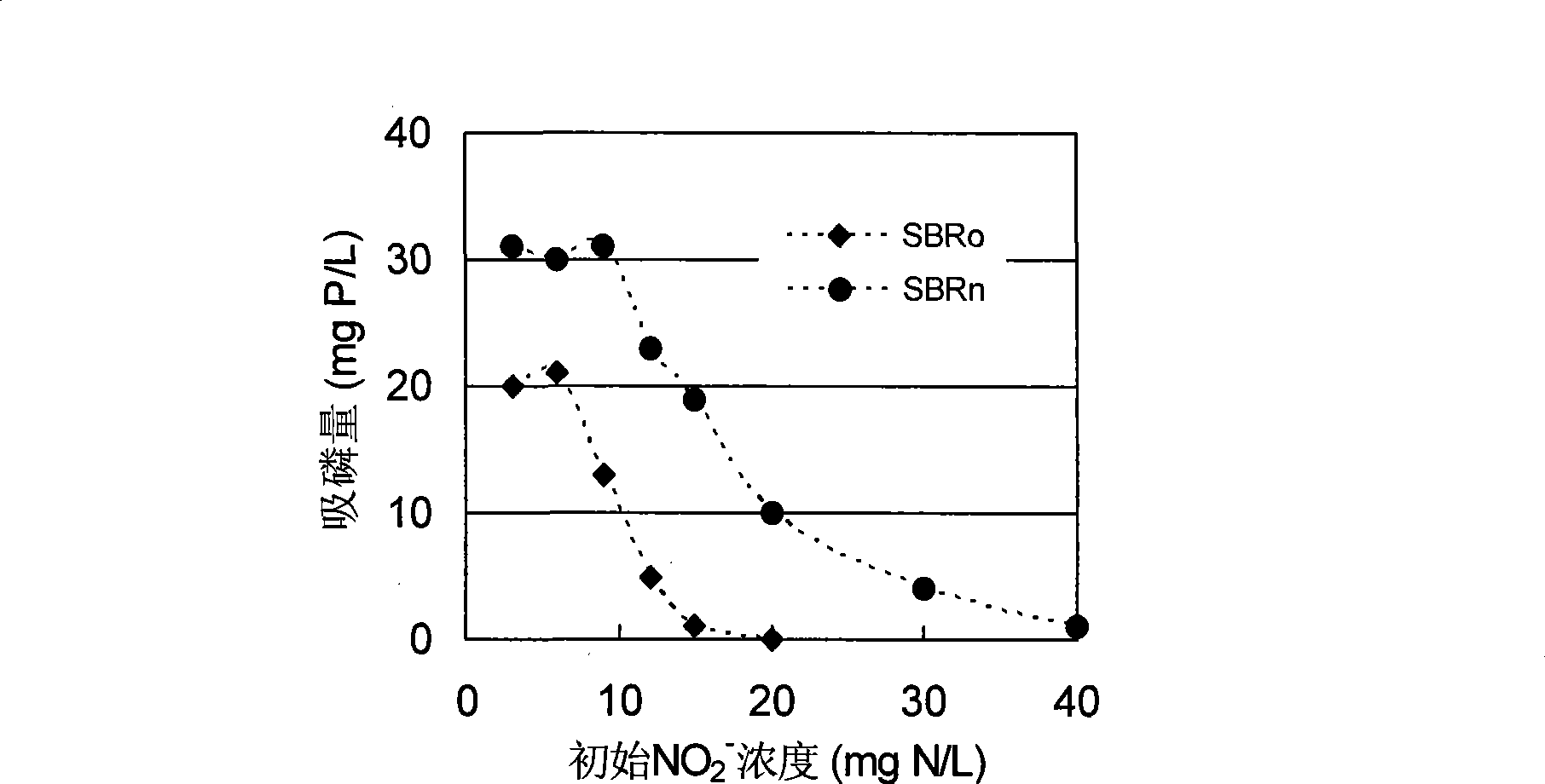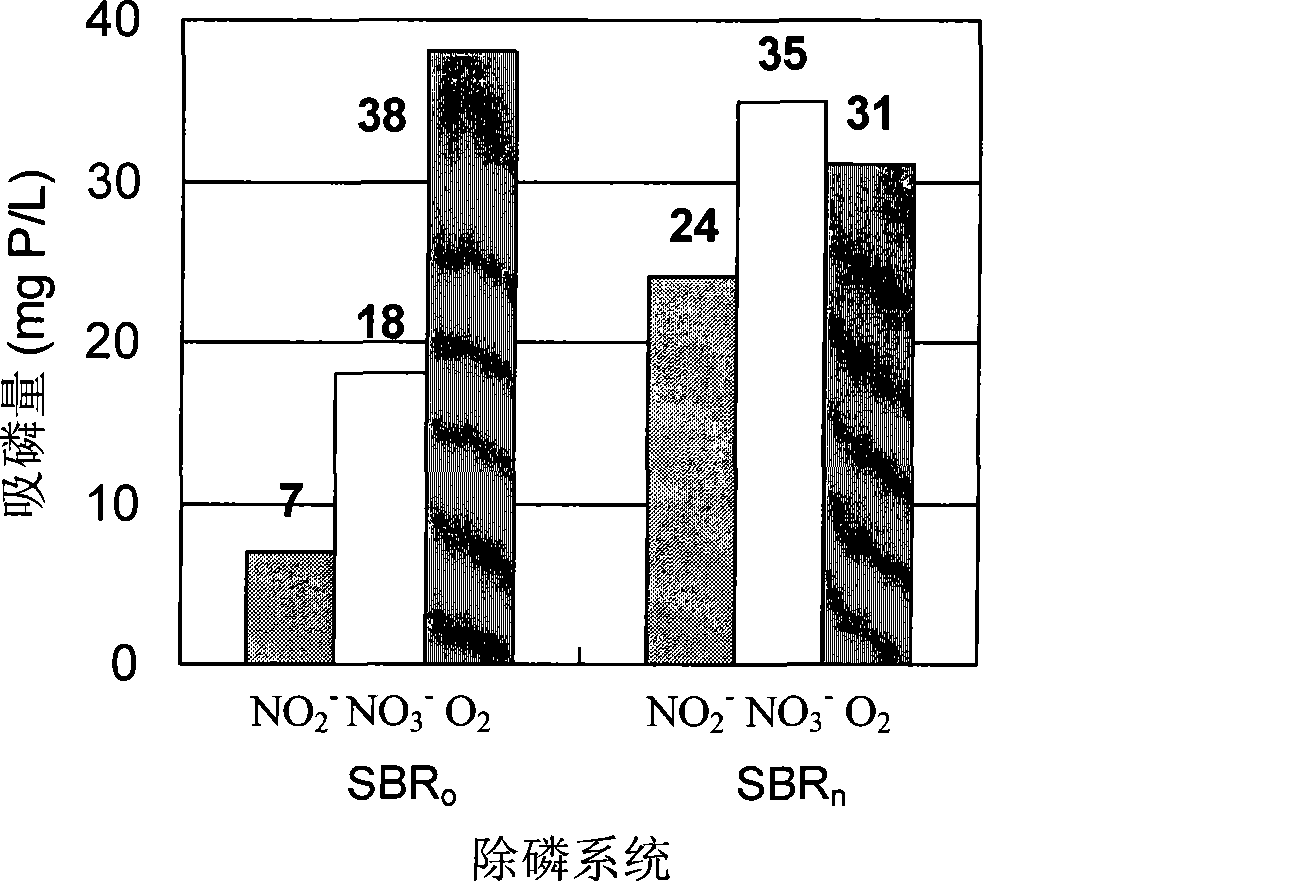Detection method for diagnosing phosphate accumulating organisms constitute in sewage water phosphorus removal system
A technology of phosphorus-accumulating bacteria and sewage, applied in the direction of biochemical equipment and methods, microbial measurement/inspection, etc., can solve the problems of different, PAO distinction is not comprehensive and accurate
- Summary
- Abstract
- Description
- Claims
- Application Information
AI Technical Summary
Problems solved by technology
Method used
Image
Examples
Embodiment 1
[0036] SBR o and SBR n For two sequencing batch biological phosphorus removal systems treating simulated domestic water (such as figure 1 ), effective volume 20L, respectively A / O and A / A (using NO 3 - Electron acceptor, COD / NO 3 --N ratio is controlled at 5.5) to run alternately; a cycle includes 1.5h anaerobic, 2.5h aerobic or anoxic, 2h sedimentation / drainage / water inflow; after sedimentation, remove 18L supernatant (including remaining sludge) to make HRT It is 6.7h; SRT is controlled at 12.5d by aerobic or anoxic residual sludge discharge; the system operates at room temperature of 18°C to 24°C, and the pH is controlled at 7.0±0.5 with 0.5mol / L HCl / NaOH. Raw water is artificially prepared with NaAc, COD110mg / L, NH 4 + -N 18mg / L (indicates that the content is 18mg / L based on N mass), PO 4 3- -P 5mg / L. The operation results show that although the phosphorus removal efficiency of the two systems is similar, the types and quantities of PAO in the sludge are obviou...
PUM
 Login to View More
Login to View More Abstract
Description
Claims
Application Information
 Login to View More
Login to View More - R&D Engineer
- R&D Manager
- IP Professional
- Industry Leading Data Capabilities
- Powerful AI technology
- Patent DNA Extraction
Browse by: Latest US Patents, China's latest patents, Technical Efficacy Thesaurus, Application Domain, Technology Topic, Popular Technical Reports.
© 2024 PatSnap. All rights reserved.Legal|Privacy policy|Modern Slavery Act Transparency Statement|Sitemap|About US| Contact US: help@patsnap.com










